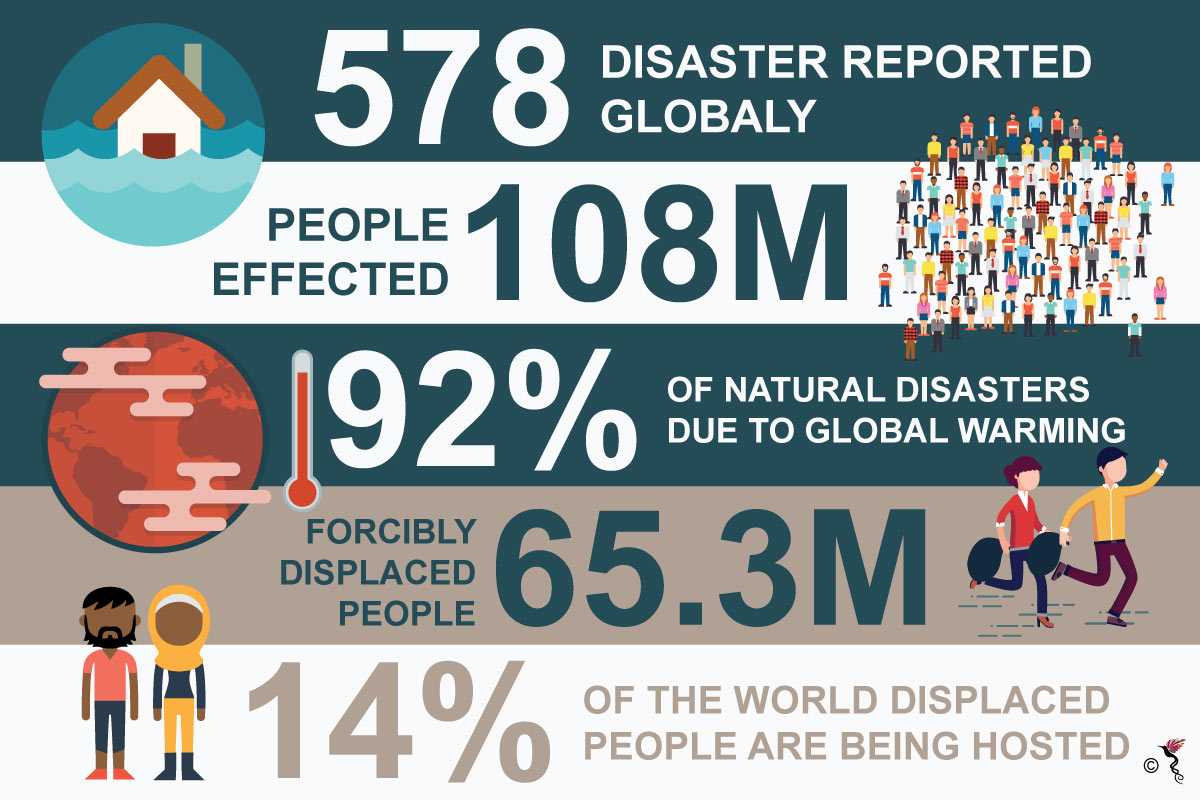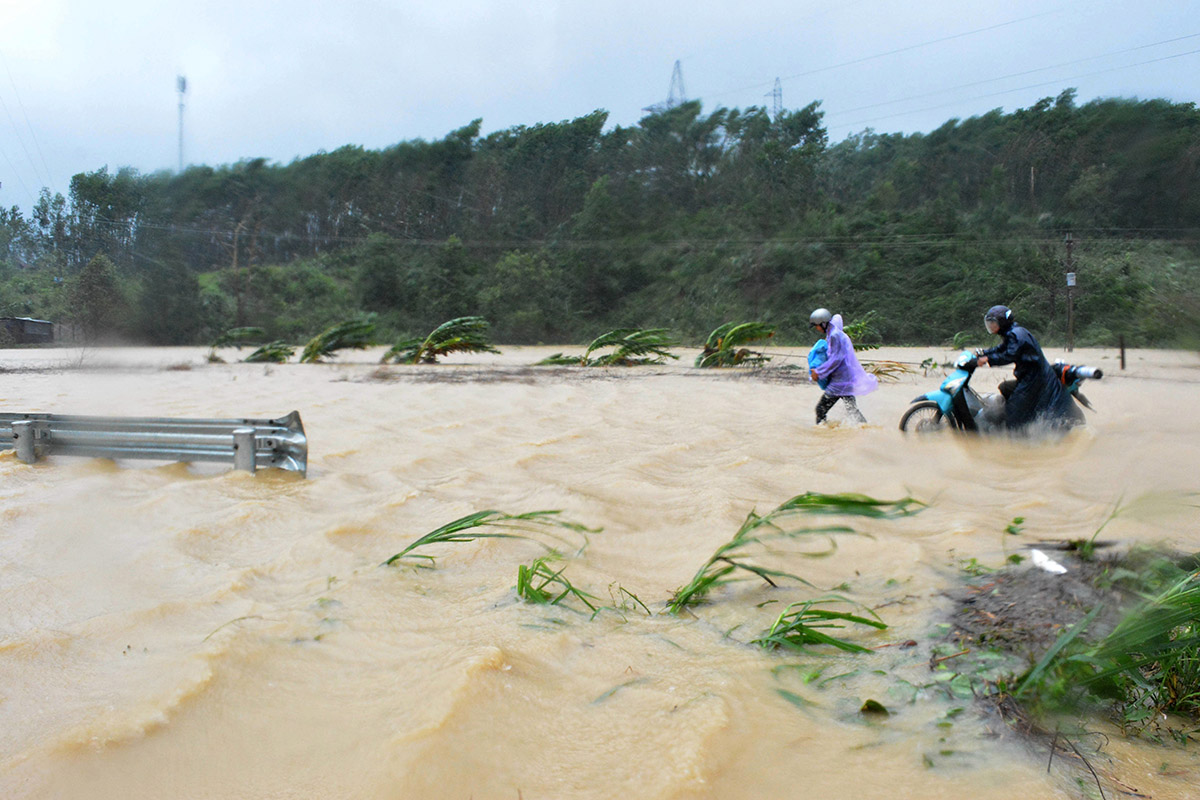Floods are the most common natural disasters in both developed and developing nations, accounting for almost 40 percent of natural disasters. The Southeast Asian region is especially prone to floods.
According to the United Nations Office for the Coordination of Humanitarian Affairs, it is estimated that 9.6 million people are currently affected by the floods in Southeast Asia, with 5.3 million in Thailand alone. These floods are caused by heavy monsoon showers, typhoons and storms as a result of climate change.
Southeast Asia is particularly susceptible to the effects of climate change due to its fast growing population – the majority of which are still living in poverty – as well as poor food security and diminishing natural resources. Climate change in return, is a result of increasing temperatures which is linked to more intense downpours, heat waves, extreme weather events, greater climate variability and rising sea levels, all of which contribute to the increased frequency and intensity of flooding.
Flooding in Southeast Asia raises many concerns for the health and economic well-being of those affected. The most recent floods in the region has occurred in Vietnam due to Typhoon Damrey and in the mainland and island of Penang, Malaysia, after a 17-hour storm.
Vietnam
Typhoon Damrey, the strongest typhoon to make landfall in southern Vietnam in 16 years, has left at least 106 people dead with hundreds of homes destroyed. The typhoon which occurred beginning this month had the strength equivalent of a Category 2 hurricane in the eastern Pacific or Atlantic oceans.
More than 40,000 homes were damaged as heavy rains and 130km/h winds tore through the area, leaving 27 dead and 22 reported missing, according to the disaster management office.
Some 300 ships were wrecked in the disaster. There were also reports of lesser damage around 500km north in Danang, which hosted the Asia-Pacific Economic Cooperation (APEC) summit.
Since the start of the year, Vietnam has bee stricken by at least a dozen other major storms. The country has reported at least 240 people dead or missing in floods and landslides since January 2017.
According to The World Bank, natural disasters have killed more than 13,000 people and caused more than 6.4 billion dollars in property damage to Vietnam over the past two decades.
Malaysia
In Malaysia, over half of the historical state of Penang was submerged in flood waters following hours of torrential rain. Seven people were killed as a result of the floods. More than 6,000 people were evacuated from their homes over the weekend.
The streets in the state capital of Georgetown, a UNESCO World Heritage site which attracts throngs of tourists, were submerged in dirty water.
According to data provided by the state government, mainland Seberang Perai was the worst affected by the floods, with the highest number of flood relief centres and victims.

Source: Aid & International Development Forum
Floods Around ASEAN
Other countries in the region have also been making headlines when it comes to floods particularly, Philippines and Thailand. Just last month, heavy rains due to Typhoon Paolo have triggered flooding in some parts of the former. More recently, The Philippine Atmospheric, Geophysical and Astronomical Services Administration (PAGASA) have given out a warning about a possible flood situation that is most likely to hit southern Luzon, including Metro Manila, and Eastern Visaya.
Thailand’s Department of Disaster Prevention and Mitigation's most recent report stated that 23 provinces in the North and upper Central Plains were severely affected at the peak of the latest flooding crisis, which started in early October. As of last week, 327,420 people were directly affected by the floods, with 47 households evacuated and 24 people left dead. Because of this, the Thais are already bracing themselves for a potential flooding in the near future, especially since downpours from the North swept down into the central Chao Phraya River basin early last month.
The economic and social impact that is brought on by these floods are enormous. Livelihoods are not only lost, but actual lives too. Loss of crops, livestock, interruption of businesses and the shutdown of schools will disrupt the economy immensely. Households will also need to be displaced and rebuilt, increasing the costs for the public and the government.
Current Flood Management In ASEAN
Given the disaster-prone condition of majority ASEAN member states, ASEAN has been raising its collective efforts to cope with the challenges. Since its inception back in 1976, ASEAN has been recognising and adopting disaster management as one of its eight principles and objectives. The declaration stated that “natural disasters and other major calamities can retard the pace of development of member states, therefore they shall extend, within their capabilities, assistance for relief of member states in distress.”
Currently in Vietnam, the ASEAN Coordinating Centre for Humanitarian Assistance on disaster management (AHA) Centre is supporting flood-hit localities. AHA aids in preparedness response, rapid assessments, coordinating mobilisation and deployment of regional disaster management as well as facilitating the incoming relief assistance from ASEAN countries.
How Can ASEAN Further Strengthen Disaster Management In The Region?
According to a study by Economic Research Institute for ASEAN and East Asia (ERIA) and Singapore Institute of International Affairs (SIIA), cooperation and collaboration in all member states should be promoted. Capacity building in priority concerns such as human resources should also be strengthened.
Community preparedness is another example of an intervention that can be improved in Southeast Asia. Both governmental and non-governmental operations are often unsustainable due to both lack of funding and community engagement.
There is a strong need for governmental organisations to continue to develop flood preparation strategies beyond mitigation and adaptation. These would include such measures as monitoring, warning, communication and dissemination, and planned evacuations.
Related Articles:
